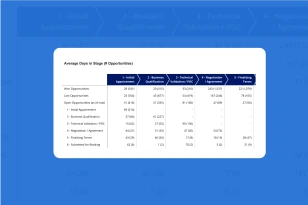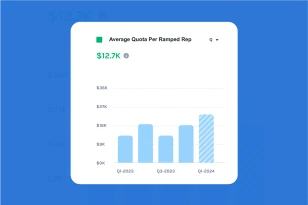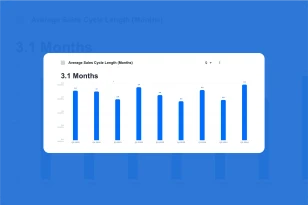What is Pipeline Coverage?
Pipeline Coverage is a sales metric that assesses the health and adequacy of the sales pipeline by measuring the ratio of the total value of open opportunities to the revenue target or quota. It provides insights into the balance between potential business and the sales target, indicating whether the pipeline is sufficiently filled with opportunities to meet or exceed the revenue objectives.
Why is it Important to Measure Pipeline Coverage?
Measuring Pipeline Coverage is essential for sales forecasting, planning, and ensuring that the sales team has a healthy and robust pipeline to meet revenue targets. A balanced and well-populated pipeline reduces the risk of falling short of revenue goals and allows for more accurate sales forecasting. It also provides early warning signs if the pipeline is insufficient, enabling proactive measures to be taken to fill it with potential opportunities.
How Do you Calculate Pipeline Coverage?
Pipeline Coverage is calculated by dividing the total value of open opportunities in the sales pipeline by the revenue target and multiplying by 100 to express the result as a percentage. It is important to base the value of open opportunities on opportunities expected to close in the same period as the period quota. For example, if you’re looking at pipeline coverage for next quarter, look at the value of opportunities with close dates for next quarter divided by next quarter’s revenue target. As such, the formula is as follows:
Pipeline Coverage Formula
(Total Value of Open Opportunities / Revenue Target) × 100
For example, if a sales team has $1,000,000 in open opportunities and a revenue target of $2,000,000, the Pipeline Coverage would be 50%.
How To Improve Pipeline Coverage?
Improving Pipeline Coverage involves strategies to ensure that the sales pipeline is adequately filled with potential opportunities to meet or exceed revenue targets. Here are key approaches:
- Lead Generation: Invest in effective lead generation strategies to continuously fill the top of the sales funnel with high-quality leads. Utilize inbound and outbound marketing, content marketing, and targeted advertising to attract potential customers.
- Lead Qualification: Implement rigorous lead qualification processes to ensure that only qualified opportunities enter the sales pipeline. Focus on leads that have a higher likelihood of converting into customers.
- Sales and Marketing Alignment: Foster strong collaboration and alignment between sales and marketing teams. Clear communication and shared goals ensure that marketing efforts contribute directly to the generation of qualified opportunities for the sales pipeline.
- Customer Segmentation: Segment the target audience and tailor marketing and sales efforts to specific customer segments. Understanding the unique needs of different segments allows for more effective lead generation and conversion.
- Sales Training: Provide ongoing training for the sales team to enhance their skills in lead nurturing, objection handling, and closing techniques. A well-trained sales team is better equipped to move opportunities through the pipeline.
- Incentives and Motivation: Provide incentives and motivational programs for the sales team to encourage proactive lead generation and pipeline management. Recognition and rewards can drive increased effort and focus on achieving pipeline targets.
- Market Expansion: Explore opportunities for market expansion to reach new customer segments or geographical areas. Diversifying the market presence can contribute to a broader and more robust pipeline.
By implementing these strategies, businesses can improve their Pipeline Coverage, ensuring that the sales pipeline is adequately filled with potential opportunities to meet or exceed revenue targets. Regular monitoring and adaptation based on performance data contribute to sustained improvements over time.





